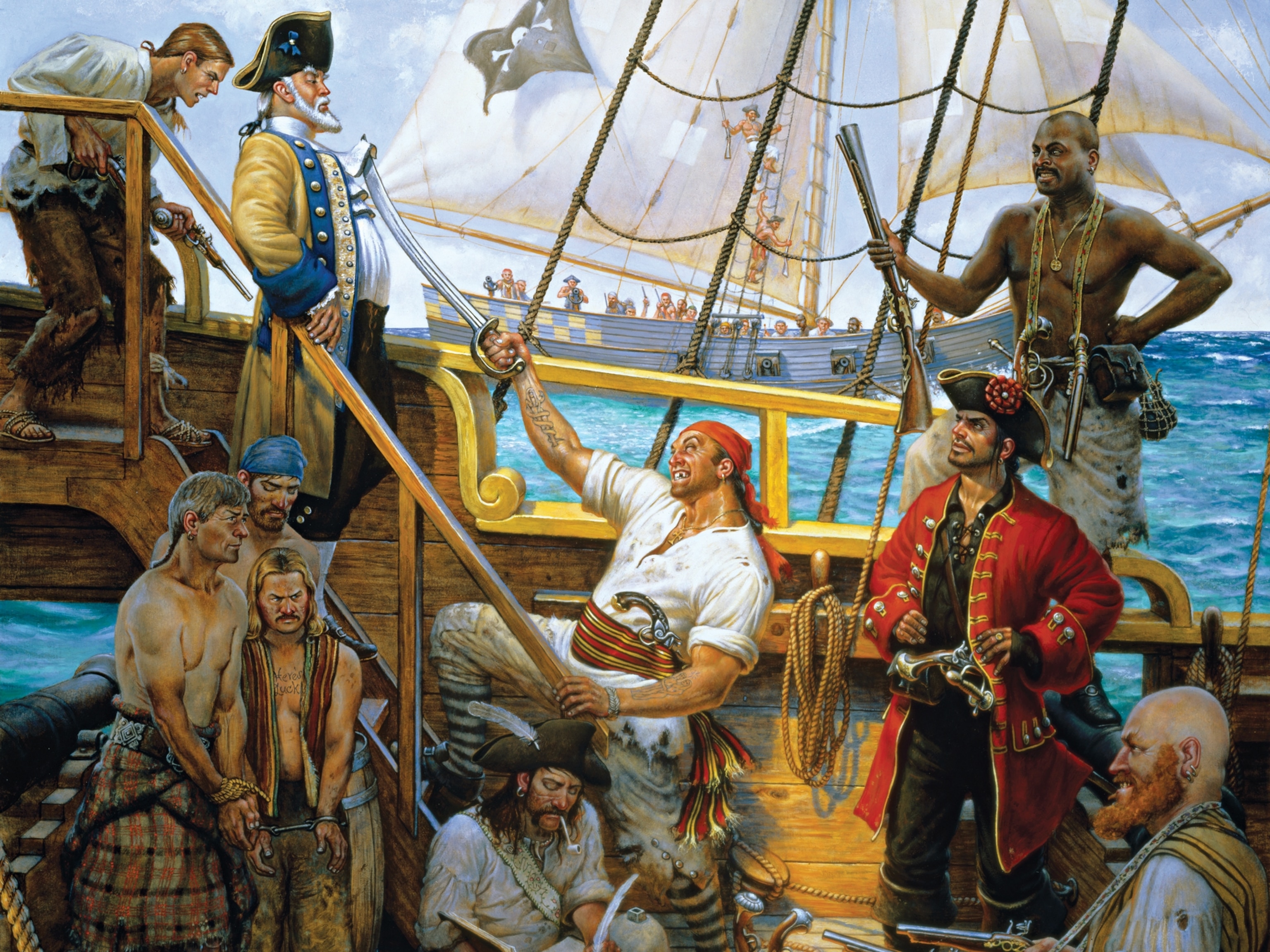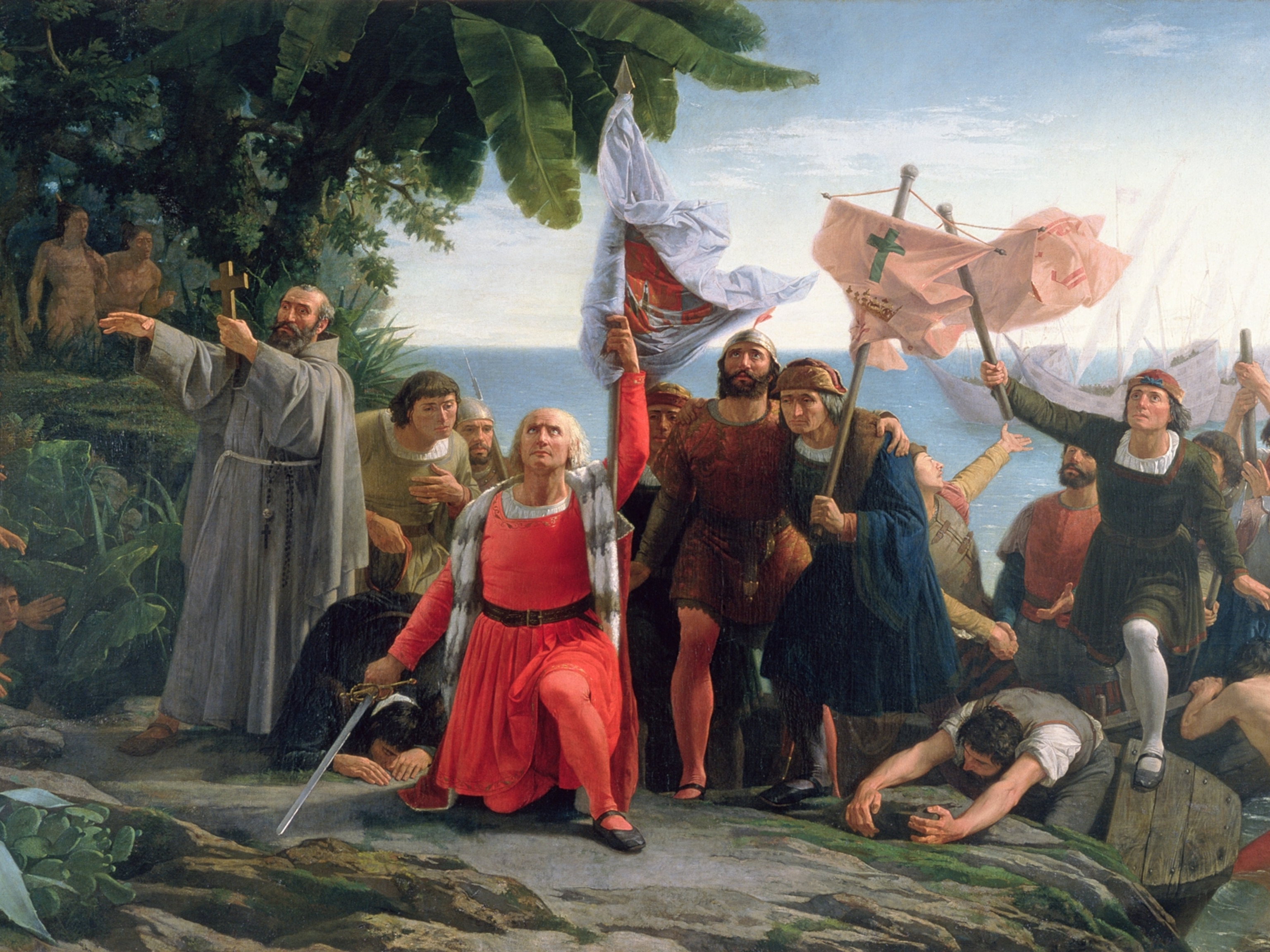Queen Elizabeth I's favorite pirate was an English hero, but his career has a dark side
Sir Francis Drake earned glory for England by plundering Spanish targets around the world. Now historians are exploring his part in the slave trade for a fuller look at this sea dog's life.

Every British schoolchild knows that Francis Drake circumnavigated the globe on the Golden Hind. Fewer are aware that when he set out on the voyage in 1577, the ship was called the
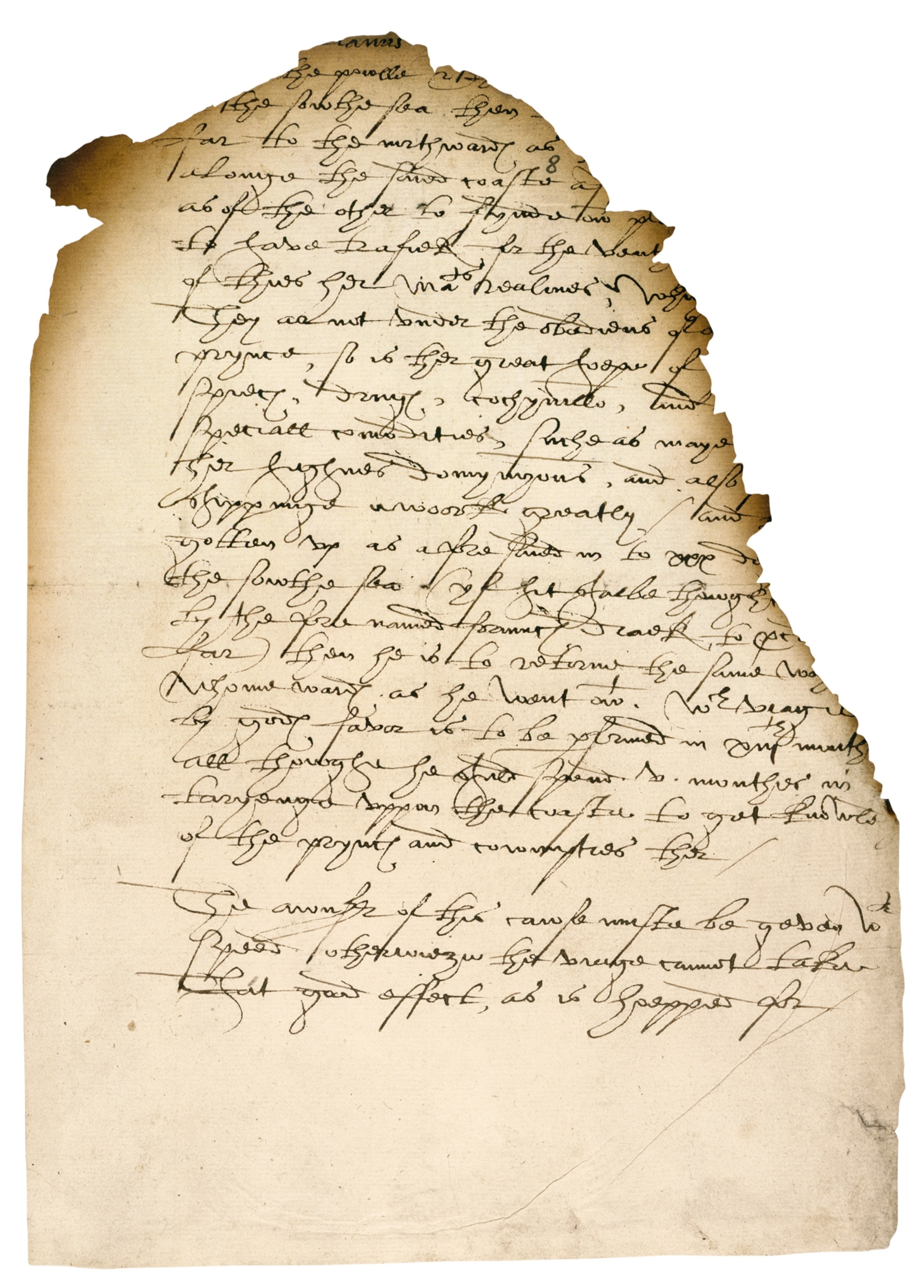
Pelican, and that Drake changed the name midvoyage to manage the consequences of having beheaded one of his own officers following a rushed—and some would say, unsafe—trial.
Four centuries of mythmaking have created different versions of Drake. To the English, he was a plucky hero of the Elizabethan golden age who outsmarted the mighty Spanish. To the Spanish, he was a pirate, feared and hated as el Draque (the dragon). Historians have peeled away these layers to reveal a more nuanced portrait. Drake lived just as England was beginning to carve out a new, naval role for itself on the European and global stage. A brilliant and fearless navigator in a new age of colonialism, Drake used—and was used by—England’s elite to get rich through pillage and slave-trading.
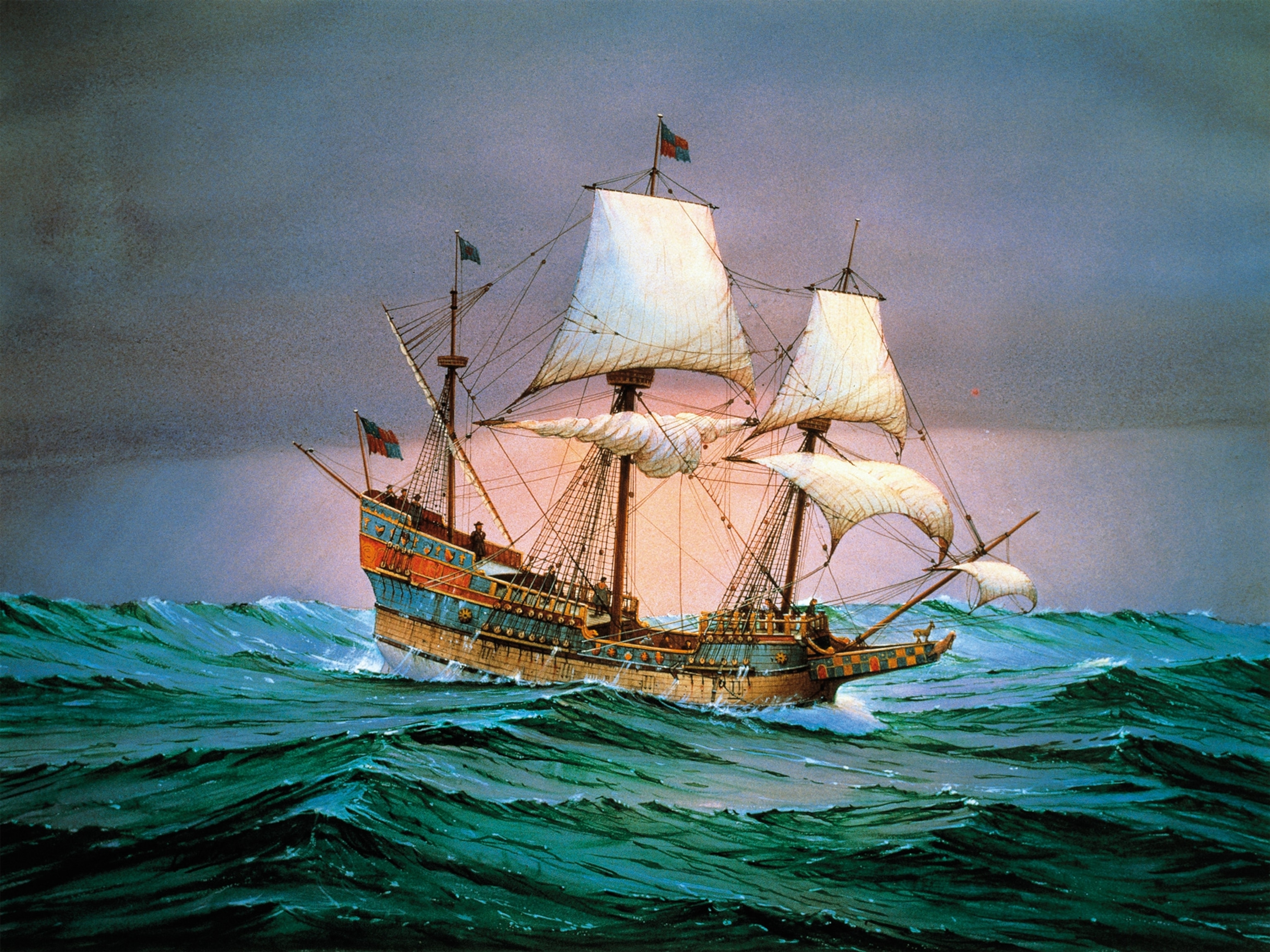
Tales of adventure
In the popular imagination, Drake is associated with one monarch: Elizabeth I. Drake’s youth, however, was deeply shaped by the religious tumult brought on during the reigns of her predecessors. Born in 1540, late in the reign of Henry VIII, Drake was a child under the Protestant Edward VI (1547-1553) and then the Catholic Queen Mary I (1553-58).
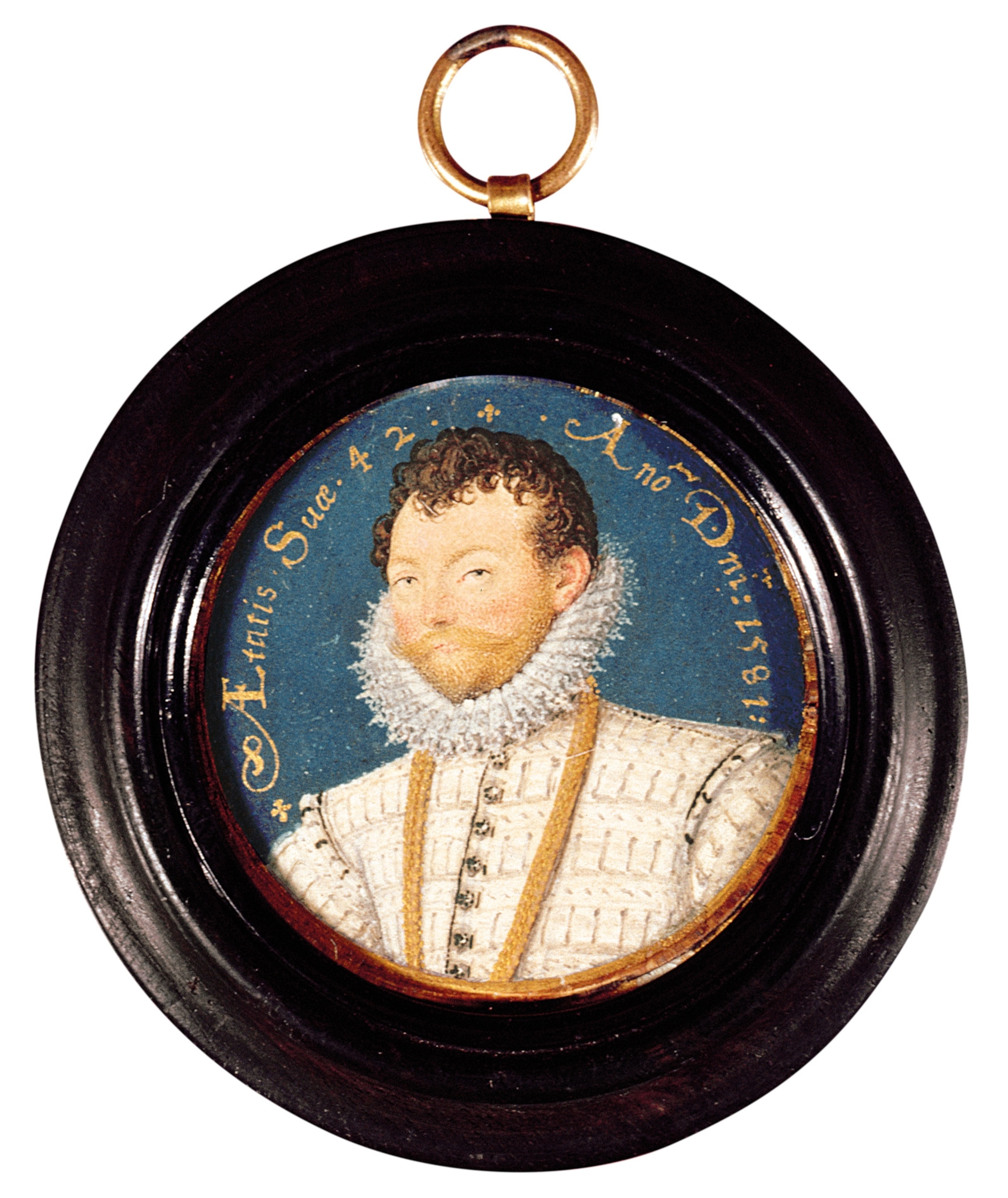
Drake’s early years were spent on a farm in Devon in western England. After his father, a sheepshearer, became a Protestant curate in southeast England, Drake was sent to live with relatives, the Hawkins family in Plymouth. The Hawkinses, as sailors and traders, exploited the growing transatlantic trade. Drake’s life would be dominated by Plymouth, the port that would play a key role in England’s colonialism—and from where the Pilgrims would set off in 1620. (Enslaved Africans first arrived in colonial Virginia in 1619.)
John Hawkins, Drake’s older cousin, became a close friend and mentor. Around age 18, Drake began sailing on the Hawkinses’s boats and was already gaining experience at sea in acts of piracy against French vessels. Requiring skill, bravery, ruthlessness, and a streak of cruelty, it was a job at which Drake would excel all his life. Drake, Hawkins, and other privateers were tacitly permitted to prey on French shipping because England was at war with France. This war, of benefit to Spain, was a consequence of Queen Mary’s decision to wed Spain’s King Philip II in 1554.
Simplified accounts of Drake often portray him as anti-Spanish and anti-Catholic. His early life, however, was marked by close links with Spain, then a global superpower. The Hawkins family business had grown in the context of Mary’s alliance with Spain, and in the blurred area between merchant, privateer, and diplomat, John Hawkins forged links with Spanish merchants, with whom he carried out acts of piracy against the French. He may even have had some diplomatic role in helping broker Philip and Queen Mary’s marriage, and, despite being a Protestant, was said to have attended Catholic Mass.
Trading Lives
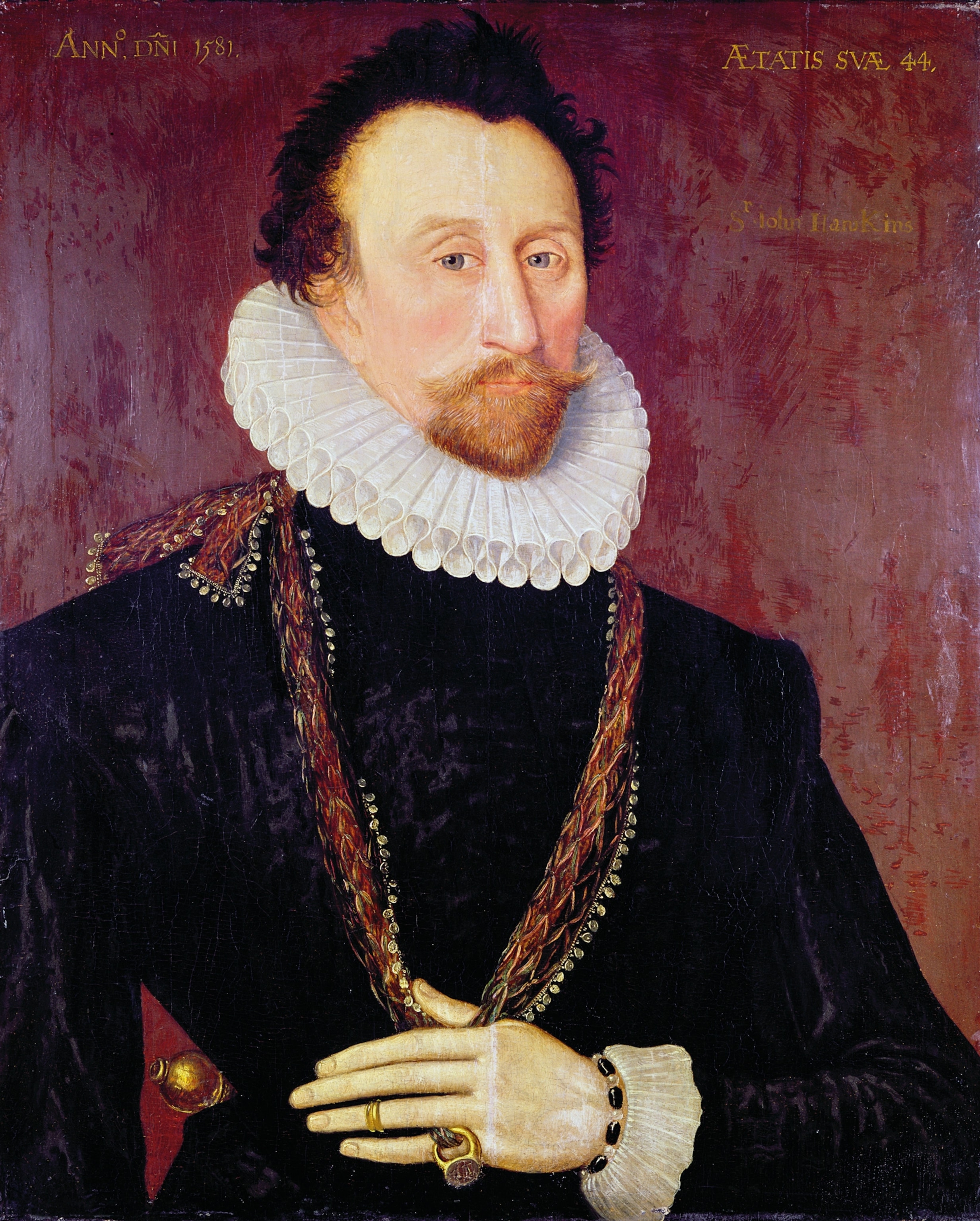
Francis Drake's career was interwoven with that of his older cousin John Hawkins. The two played a pivotal part in establishing England’s role in the so-called triangular trade: English goods were traded in West Africa for enslaved people, who were forcibly taken to the Americas, from where raw materials were brought back to England. Hawkins launched his first slave trading venture in 1562; he and Drake traveled to Sierra Leone and seized between 300 and 400 people to sell in the American colonies.The voyage was very profitable and secured backing from the crown for future trips. Hawkins and Drake would return twice to West Africa in the 1560s and take as many as 1,200 enslaved people to the Americas.
Profit and glory
In November 1558 Mary I died, and her half sister Elizabeth, a Protestant, became queen of England. In the early years of her reign, Elizabeth was careful not to antagonize Spain but was aware of how the Americas were generating great wealth for Spain, increasing its naval power and spreading the Catholic faith.

Colonial expansion intrigued the queen, and little in the way of international law governed the course that expansion could take. At the time, Elizabeth I did not have the naval power to match Spain at sea, so she needed to find a different way to challenge the Spanish Empire. (England's Elizabeth I and Spain's Philip II went from allies to enemies.)
Smaller operations proved to be a profitable strategy, but in the headlong race for wealth and glory, consideration for the lives of non-Europeans was absent. By 1562, with the help of fellow Spanish traders and the backing of a London syndicate, Hawkins broke into the lucrative transatlantic slave trade, seizing people in West Africa to sell in the Americas. Following the success of the first expedition, Elizabeth and members of her privy council invested in the next two trips, financially benefiting from the sale of people as chattel. Drake participated in all of Hawkins’s ventures, including the operation to purchase and kidnap hundreds of people from local rulers in Sierra Leone. (These 9 memorials trace the global impact of slavery.)
Despite their profits, Hawkins and Drake faced a problem: The Spanish crown prohibited trade between its colonies and other nations, even though colonists sought trade opportunities. Hawkins, and later Drake, developed a baroque ritual: First, he requested a license to trade and would be rebuffed. Then he fired on the colonial settlements; in response, the Spanish put on a show of resistance. After a decent interval had elapsed, both sides worked behind the scenes to covertly buy and sell.
In 1568, however, at the fort of San Juan de Ulúa, in the port of Veracruz (today in Mexico), this tactic failed. Drake was sailing under the command of his cousin Hawkins, who had docked in San Juan de Ulúa to repair and restock his six ships with assurances that the Spanish would not attack. The Spanish reneged, sinking or capturing four of the English ships. Drake and Hawkins managed to escape to safety. Hawkins’s ship, however, held many survivors, whom he was later forced to leave stranded; Drake, meanwhile, headed back alone to England, “and so forsooke us in our great myserie,” Hawkins wrote later. The incident placed a great strain on the two men’s relationship.
National Defense

The fortress of San Juan de Ulúa has guarded the port of Veracruz, Mexico, for nearly 400 years under the flags of different countries. Seated on a small island of the same name, the first Spanish structures were built there in 1535 and enlarged over the years to include towers, a prison, and a palace. Francis Drake had an encounter with the Spanish there in 1568 when the fort served as a colonial outpost for Spain. When Mexico declared its independence in 1821, Spanish troops were reluctant to quit the fort but were forced out in 1825.
Drake, who lost goods and close friends in the attack, vowed to take revenge. Drake asserted that the incident left him with a deep hatred for both the Spanish and Catholicism. His seamanship would give him plenty of opportunities for revenge. England was not officially at war with Spain, so Drake could not yet receive a letter of marque from the queen to attack enemy ships and populations.
Even so, during a series of expeditions he conducted from 1570, backed by the crown, Drake led increasingly daring raids into the Spanish Main. In Central America Drake climbed a tall tree from which he could sight the Pacific and vowed that he would enter its waters aboard an English vessel.
These early incursions into Spanish colonies included notable failures. From these, Drake learned the need for discipline and planning. Finally, in 1572, after a carefully organized raid on a treasure caravan in Nombre de Dios (today in Panama) he struck gold—or rather silver—in huge quantities. The haul allowed him to return to England with a fortune, as well as significant plunder in captured boats. The wealth and reputation of the young buccaneer had attracted the admiring attention of the queen. Drake was now one of Elizabeth’s Sea Dogs, a group of captains (including Hawkins) whose piracy provided a source of income for the crown while disrupting Spain’s colonial operations.
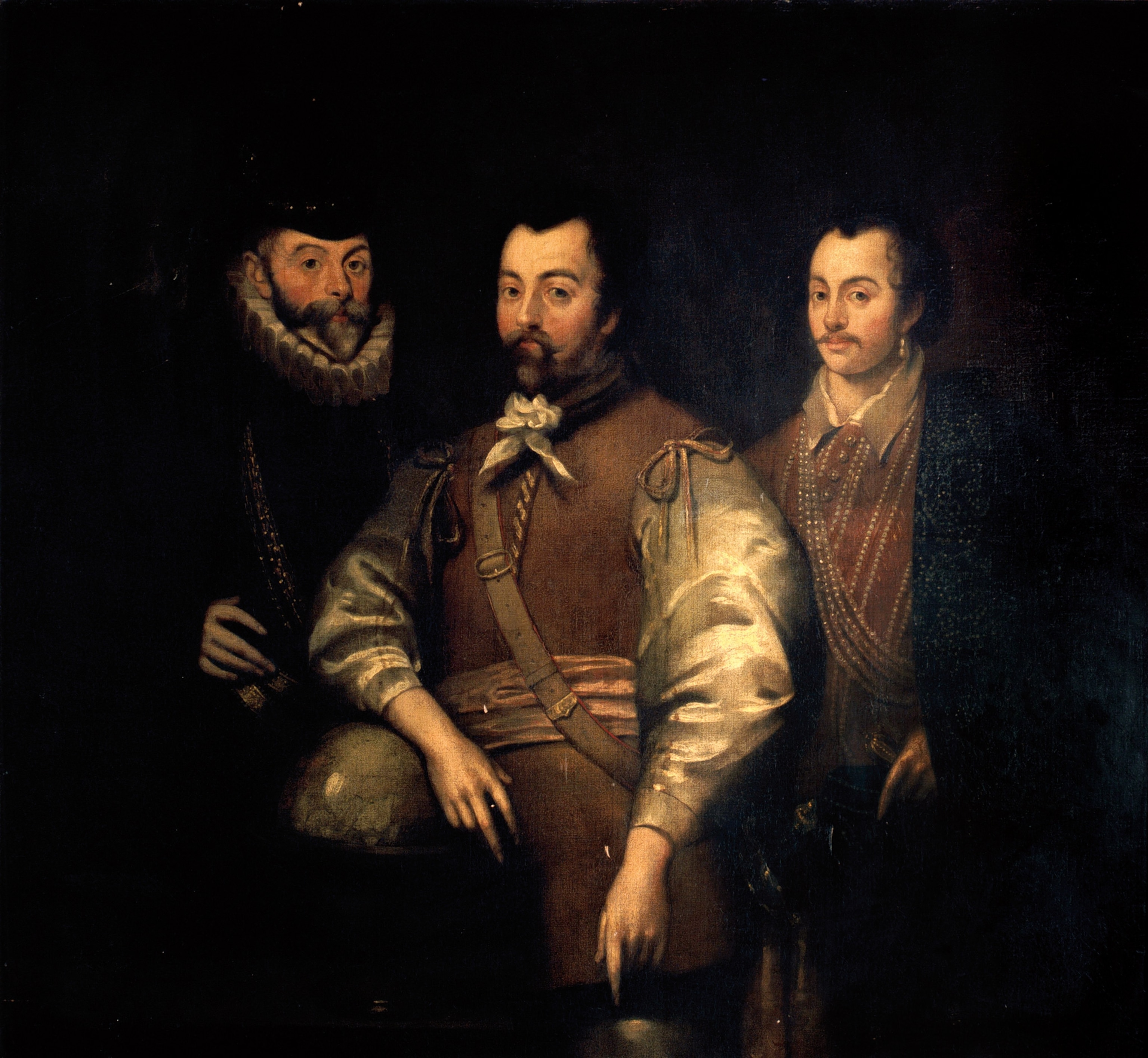
Around the world
The England that Drake returned to in 1573 was enjoying a brief truce with Spain. For a few years, he refrained from long-distance ventures, but in 1577 glory beckoned once more: He was appointed to command an expedition through the Strait of Magellan to the Pacific.
Although the venture could not be publicly supported by the crown, Drake did have the queen’s personal backing. In their meeting, Elizabeth reportedly told him she “would gladly be revenged on the king of Spain for divers [sic] injuries that we have received.” The objective of the venture was to “find out places meet to have traffic.” Since it was not envisaged that the fleet would have anything to trade, the queen was guardedly saying the voyage would enrich itself and its financial backers through piracy.

Crewed by about 170 men, the five-ship fleet set out from England in the dying days of 1577. Initially, the crew were told they were going to the eastern Mediterranean, but evidence for another plan must have become clear from early in the voyage.
Led by Drake’s own ship, the Pelican, the fleet followed roughly the same route of the Portuguese sailor Ferdinand Magellan, who nearly 60 years before had captained the first circumnavigation of the globe. A Venetian nobleman, Antonio Pigafetta, chronicled the voyage, and Drake’s crew studied Pigafetta’s account. The honor to chronicle Drake’s journey fell to the ship’s onboard rector, Francis Fletcher. (240 men began Magellan's voyage around the world. Only 18 finished it.)
The Atlantic crossing was rough on Drake’s crew, leading to problems with morale. Back in 1520, Magellan had quarreled with a senior officer and bloodily put down a revolt in San Julián (in what is today southern Argentina). By coincidence, the same windswept port was the setting of Drake’s settling of scores with his senior officer Thomas Doughty. Tensions between the noble Doughty and the lower class Drake came to a head in July 1578, when Drake accused him of treason and witchcraft.
Claiming his authority was based on a royal commission—a lie, but an effective one— Drake tried Doughty and condemned him to death. Fletcher recounted how the two men shared a final meal together, “as cheerfully as ever in their lives they had done aforetime.” Shortly afterward, Doughty was beheaded. It has been argued that Drake’s subsequent decision to rename the Pelican was to appease Doughty’s close friend, Christopher Hatton, an influential investor of the expedition whose crest was a golden deer, or hind.
The newly christened Golden Hind led a much smaller fleet, by then reduced to three boats since damage had rendered others too unseaworthy to sail into the Strait of Magellan. The stormy passage sank one boat and caused another to return to England after being separated from the group.

In fall 1578, after 16 chaotic days, the Golden Hind and Drake sailed into the Pacific. Entirely alone, the Golden Hind sailed up the western coast of South America, past what is today Chile and Peru. The account of the voyage—based on Fletcher’s chronicle published in 1628 as The World Encompassed—reflects not only the loneliness of this voyage but also Drake’s astonishing seamanship in maintaining and steering his ship, feeding and placating his crew, all the time directing his firepower on Spanish settlements and vessels who found themselves at the sharp end of English piracy for the first time.
One of his biggest prizes was the Nuestra Señora de la Concepción. The bounty aboard this Spanish treasure ship was so massive it took days to transfer it to Drake’s coffers.

Pushing far to the north, Drake made a bold bid to find the northwest passage that navigators believed would allow a route back to Europe. He may have traveled as far north as modern-day Vancouver. Forced south again by the cold, he anchored near what is now San Francisco (the Spanish would not establish a mission there until 1776). Drake claimed the lands around the spot for the queen, naming them New Albion.
Resuming his great voyage westward, the Golden Hind roughly followed Magellan’s return route through the Spice Islands, then across the Indian Ocean to round the Cape of Good Hope. His return to Plymouth, on September 26, 1580, filled the English with national pride and the coffers of his powerful investors with Spanish loot. His knighthood followed in April 1581 on the decks of the Golden Hind.
Sharp Diplomacy

Elizabeth I boarded the Golden Hind in April 1581 to knight Francis Drake in honor of his successful circumnavigation of the globe. The queen did not perform the ceremony herself (although many 19th-century works of art show her doing so). Instead, she handed the ceremonial sword to a French ambassador, Monsieur de Marchaumont. Historians have questioned why she chose to hand off the ceremony to someone else, and two schools of thought have arisen. In the first, the queen may have wanted to avoid provoking Spain by honoring Drake herself, since he had just plundered many Spanish colonies. The second notion is that the queen was signaling to France that England was open to an alliance against Spain. At the time, Elizabeth I was publicly considering marriage to Francis, Duke of Anjou and brother to the French king. Her action may have been to provoke Spain by currying French favor. No matter the reason, the queen’s true intentions remain a mystery.
Chaos in the Caribbean
After the circumnavigation, Drake spent the next few years dabbling in local politics in England. He served as mayor of Plymouth and purchased nearby Buckland Abbey as a fitting abode for a now wealthy man. Despite all this comfort, Drake could not stay away from the sea, and it is unlikely that Queen Elizabeth would have let “her pirate,”as she allegedly called him, stay ashore for long. (Who were the real pirates of the Caribbean?)

Tensions were reaching a breaking point with Spain. Philip’s support for Elizabeth’s enemies in Ireland and Scotland, together with Elizabeth’s support for insurgents in the Spanish Netherlands, was moving the two countries closer to war. In 1585 the queen called upon Drake. He was chosen to command a fleet to target Spain’s Caribbean holdings in what became known as his “great expedition.”
Setting sail on September 14, 1585, Drake’s 29-ship fleet, crewed by 2,300 armed men, surged south to Spain itself. Historians believe Drake may have been hoping to ambush the Spanish treasure fleet near the southern tip of Portugal, but no sighting was made. After a failed attack on the Canary Islands, the fleet headed south for the Cape Verde archipelago off the coast of Senegal, where the corsairs spent two weeks looting the few riches the island had and hoarding food. They also picked up an epidemic (possibly pneumonic plague) on the island, which devastated the ships’ crews. As Drake’s fleet headed west toward the Caribbean, nearly 300 crew members died.
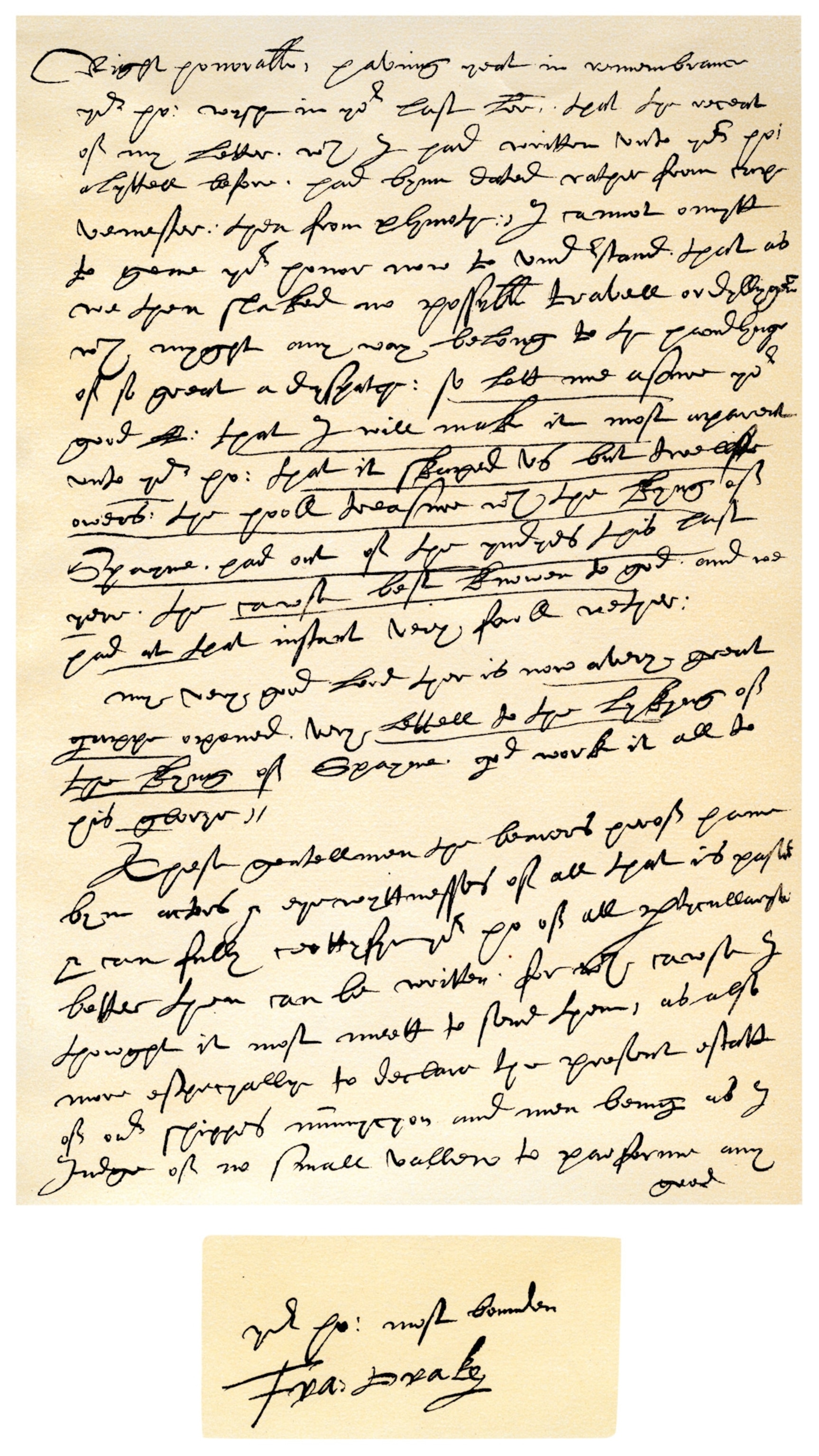
Drake’s first objective was Santo Domingo (today the capital of the Dominican Republic). By early January 1586, his forces had taken the city, but the looting did not produce the goods they’d hoped for, so the English demanded a ransom to leave.
Having finally secured an acceptable fee, Drake’s fleet moved on to Cartagena de Indias (today in Colombia) to repeat the tactic. After looting homes and richly adorned churches, they demanded a ransom from the local authorities. Drake was under pressure to complete the negotiations quickly as the epidemic was still spreading among his men. Conditions aboard his ships were worsened by taking prisoner large numbers of enslaved people.
The Battle for Cartagena
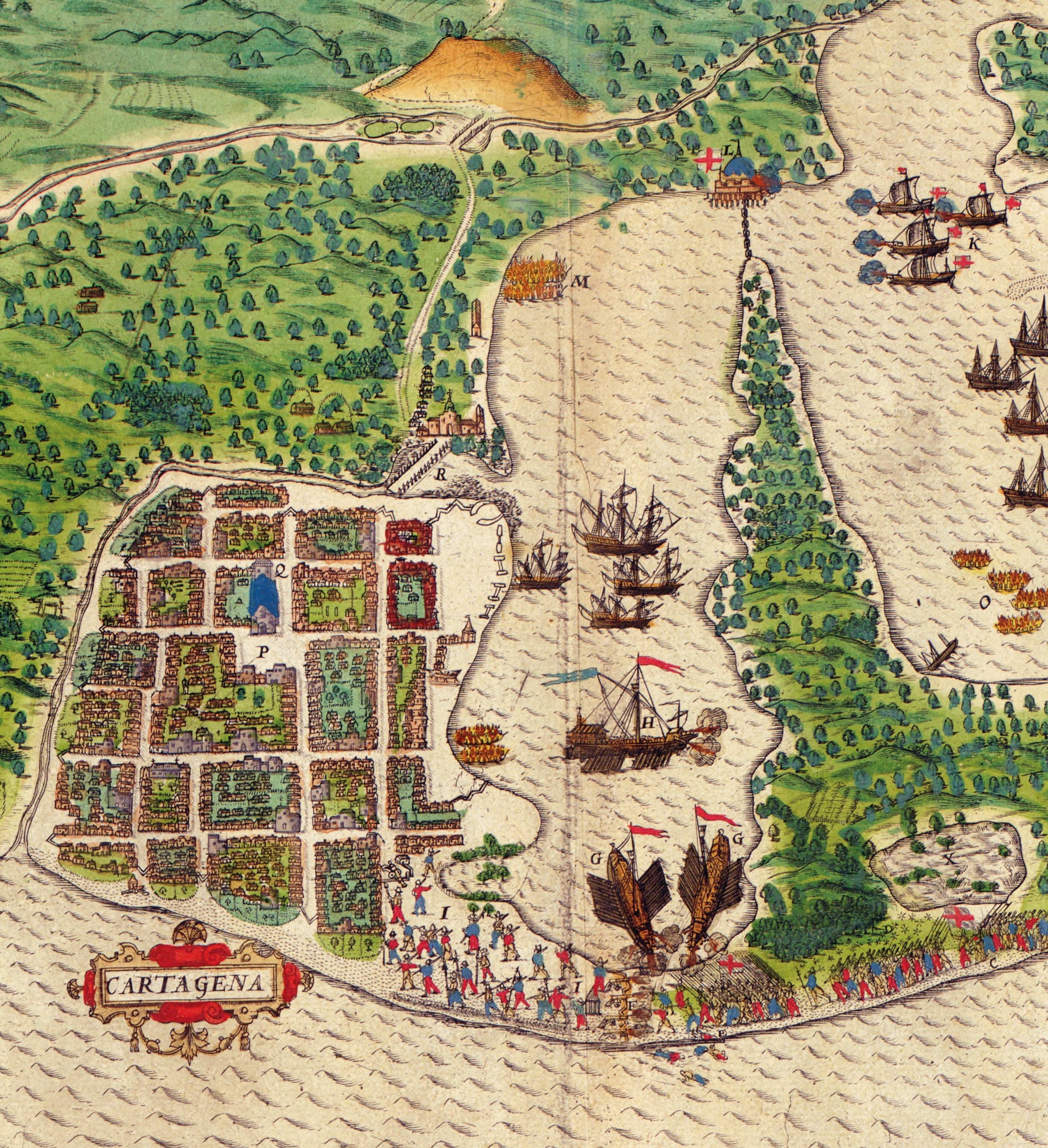
After Drake’s January 1586 siege of Santo Domingo (in what is now the Dominican Republic), the rest of the Spanish Main went on high alert, especially wealthy settlements like Cartagena de Indias (in modern Colombia). Founded by Spain in 1533, this Caribbean port had grown to become an important trading center. In February 1586 Drake took the city, held it, and left on March 26 after negotiating a ransom of 110,000 ducats.
In April the fleet set sail again, but the ravages of the pestilence forced Drake to abandon plans to attack Cuba. In early June he landed in Florida, where his men looted the Spanish settlement of St. Augustine. Having rested and taken on supplies, the fleet swept northward to the English colony of Roanoke Island (in today’s North Carolina, United States).
When Drake arrived, he learned that the Roanoke colonists wanted to abandon the struggling settlement to return to England. The colonists accompanied Drake’s fleet on its return leg across the Atlantic, bringing with them “[t]hat Indian plant,”a chronicler wrote, “which they call Tabacca and Nicotia.” Some historians believe Drake took the enslaved people from Cartagena to Roanoke Island, but it is not known if they stayed there or were taken to England. What befell them has never been established.

Drake’s missions had proven both that Spain’s colonies were poorly defended and that England could significantly damage its enemy’s imperial prestige through small targeted attacks. Even though the great expedition turned out to be a financial flop, netting a fraction of what its investors hoped for, Drake’s star continued to rise, especially in the context of England’s defeat of the Spanish Armada.
Spain was set on invading England with its impressive naval forces (about 130 ships), but in 1587 Drake had staged a daring raid—“singeing the King of Spain’s beard,” as he described it—on the Spanish port of Cádiz. Drake’s forces destroyed Spanish ships and supplies, delaying Philip II’s assault against Elizabeth I until 1588. When the Spanish Armada eventually sailed north, it was defeated by a combination of the English navy and poor weather.
Drake served as a vice admiral in the effort to defeat the Spanish and earned the love of his country for it. For generations, a story circulated that Drake was playing bowls at Plymouth when news of the Armada’s sighting reached him; unperturbed, he declared there was still time to win the game and then beat the Spaniards. This tale helped forge a popular belief that Drake’s cool confidence helped secure the English victory.
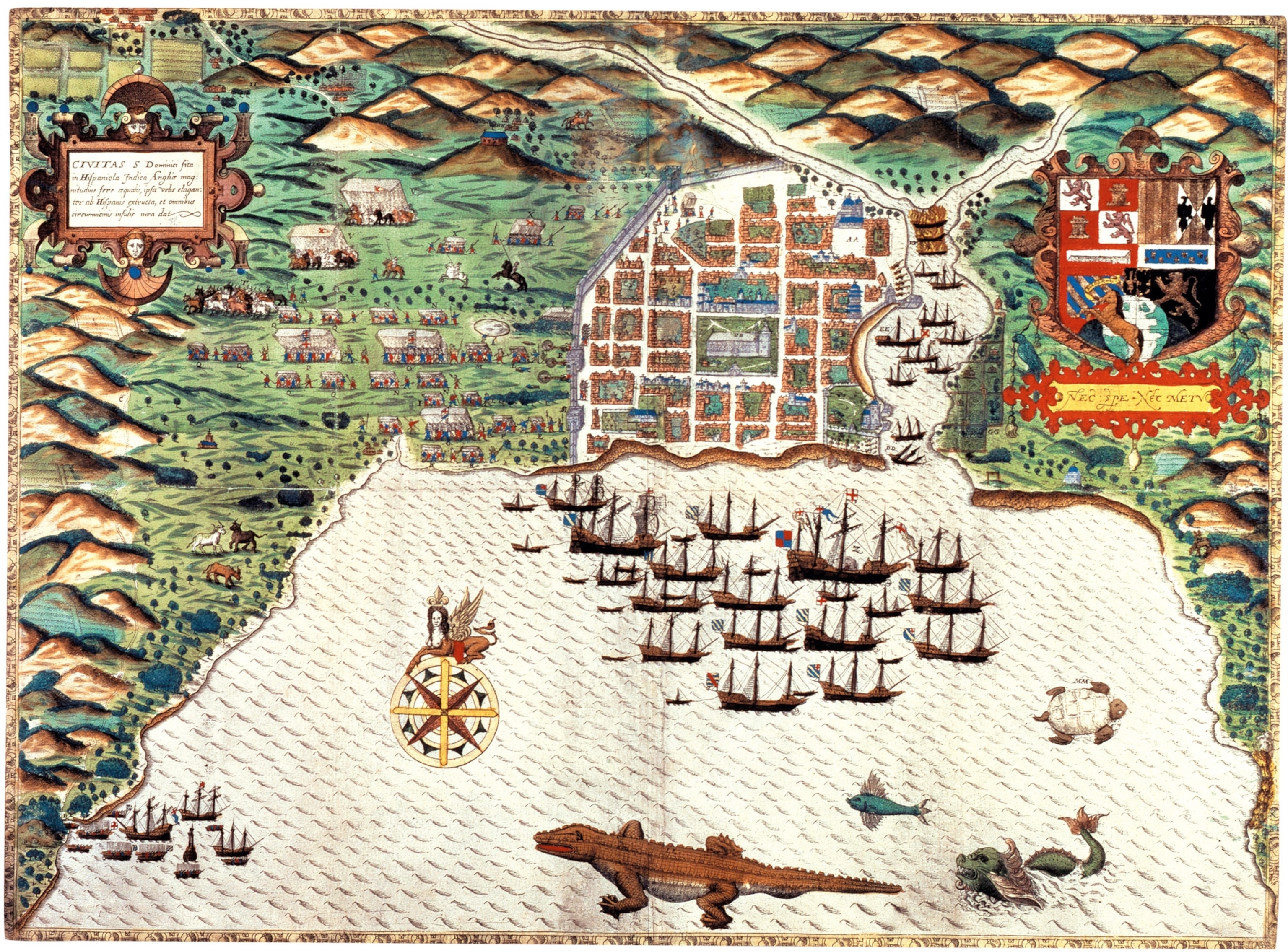
The myth of Drake
Drake’s last years were not glorious ones. Rather than retire to Plymouth, he returned to his life at sea. In 1589 his punitive raids into Spain caused great loss of life on both sides. Several years later in August 1595, he crossed the Atlantic with John Hawkins in a bid to rescue Hawkins’s kidnapped son and harass the Spanish. Their efforts were unsuccessful, and Hawkins died in November 1595. Drake pressed on but was turned back by Spanish forces in Panama. In January 1596, at age 55, he died of dysentery aboard his ship. Dressed in a full suit of armor, he was enclosed in a lead coffin and buried at sea off the coast of Panama.
After his death, romantic myths arose around Drake’s legacy in English culture. His baser material motives were overlooked in order to forge a dashing, unflappable hero. In Spanish history, meanwhile, Drake provided ample material for the portrayal of a villain. Lope de Vega’s poem La Dragontea (1598) presents a vivid demonization of the English sailor, whereas Juan de Castellanos’s El Discurso del Capitán Francisco Draque slyly compliments the pirate’s skills and uses his devastating attacks on Caribbean ports to criticize Spain’s King Philip II. Long after British and Spanish imperial fortunes waned, Drake’s figure serves as a lightning rod for the intense debate over the ethical dimensions of colonialism and the transatlantic slave trade.
Julius Purcell is deputy editor of National Geographic History.




